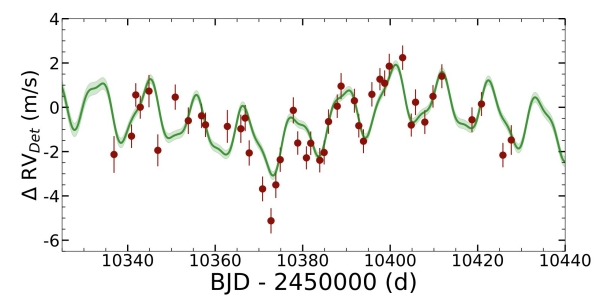The first scientific results of the high-resolution near-infrared spectrograph NIRPS (Near Infra-Red Planet Searcher) are published (July 29th) in the journal Astronomy & Astrophysics. In operation at the ESO La Silla 3.6m telescope since April 2023, and working in tandem with HARPS, NIRPS is a new ESO facility that offers exceptional performance for the detection of exoplanets orbiting M dwarfs and for studying exoplanet atmospheres (Bouchy et al. 2025, A&A, 700, A10). It is the first spectrograph operating in the near infrared that reaches similar results to state-of-the-art spectrographs operating in the visible, such as HARPS.
NIRPS First Scientific Results

The NIRPS consortium brought together new technologies and advanced signal processing algorithms to push the instrument to an unprecedented level of performance. These technologies include an Adaptive Optics system, fibre modes scrambling, and thermal stabilization.
In its first semester of operation, NIRPS has already made major discoveries. Among them, a detailed study of Proxima Centauri, the closest star to the Sun, confirmed the presence of Proxima b, an Earth-mass planet in the habitable zone, and revealed strong evidence for a second, lighter planet, Proxima d (Suarez Mascareno et al., 2025, A&A, 700, A11). These findings mark a new level of precision in the infrared observations, proving NIRPS’s power to unveil small, potentially habitable worlds around nearby stars in our cosmic backyard.
In a separate study, NIRPS was used to observe the atmosphere of transiting giant exoplanets. Among them, the Saturn-mass planet WASP-69 b, reveals a long, comet-like tail of helium gas escaping from the planet (Allart et al., 2025, A&A, 700, A7). These results will enable the NIRPS consortium to conduct unprecedented population studies of exoplanet atmospheres to understand how exoplanets form and evolve.
